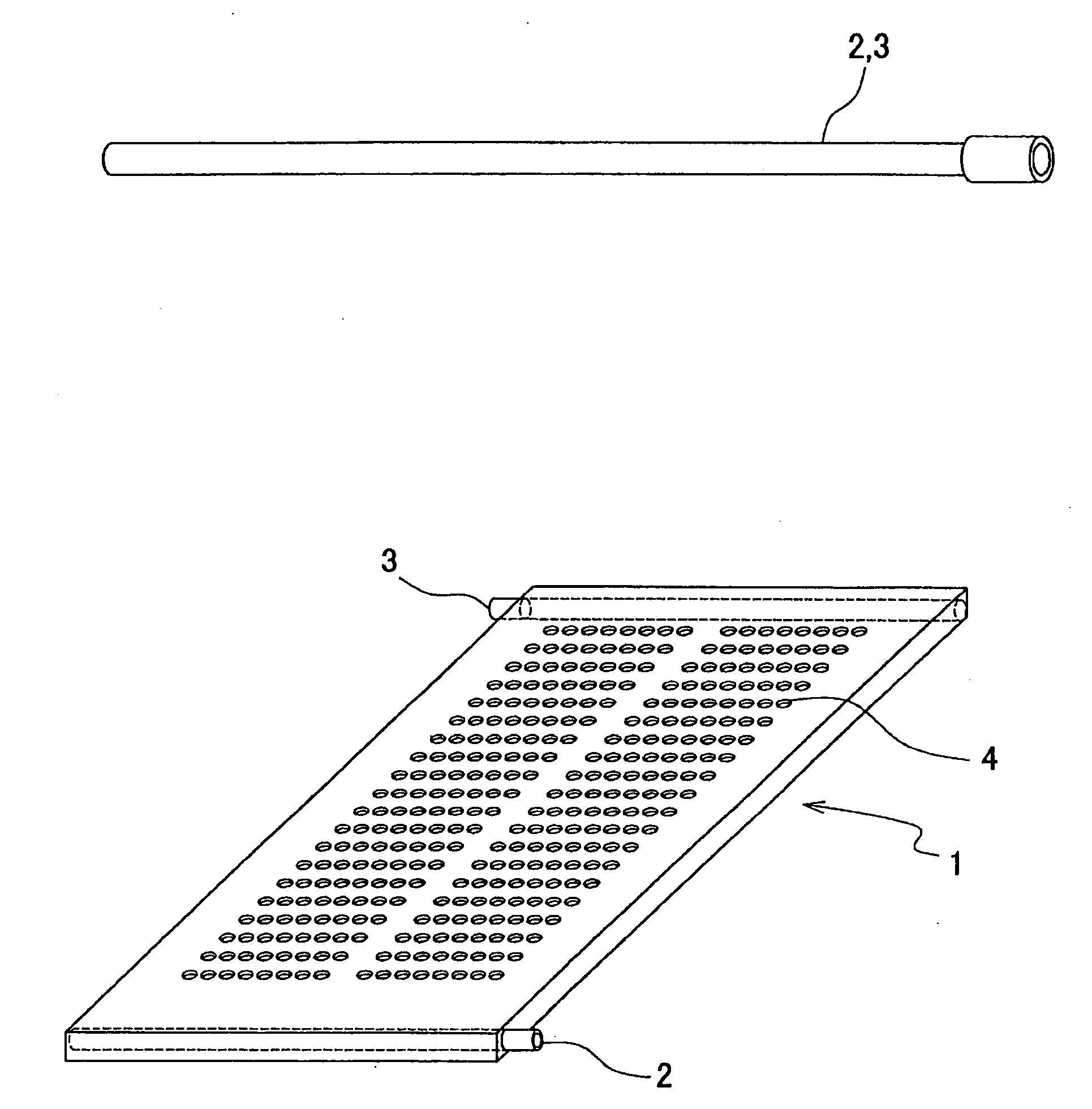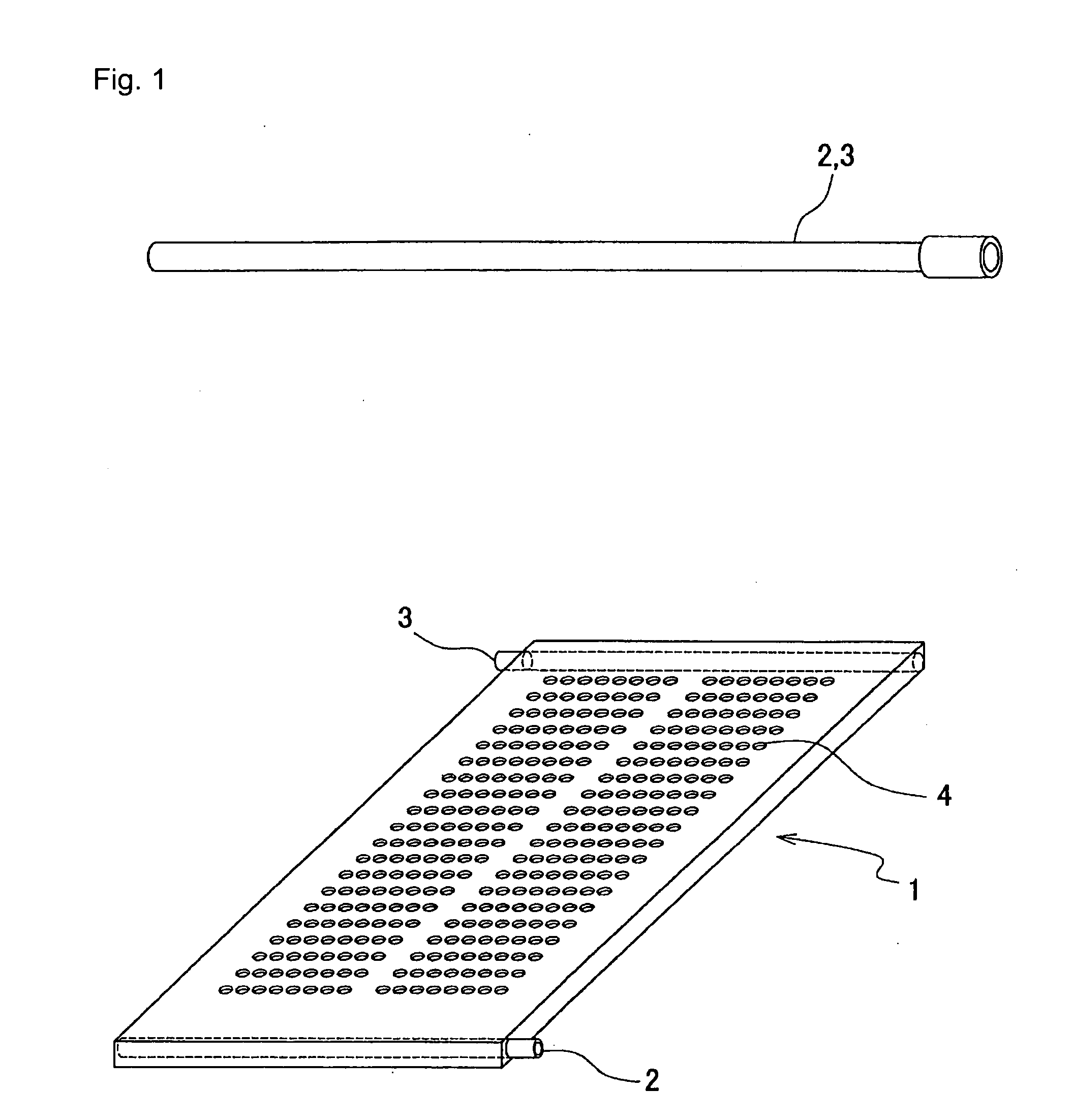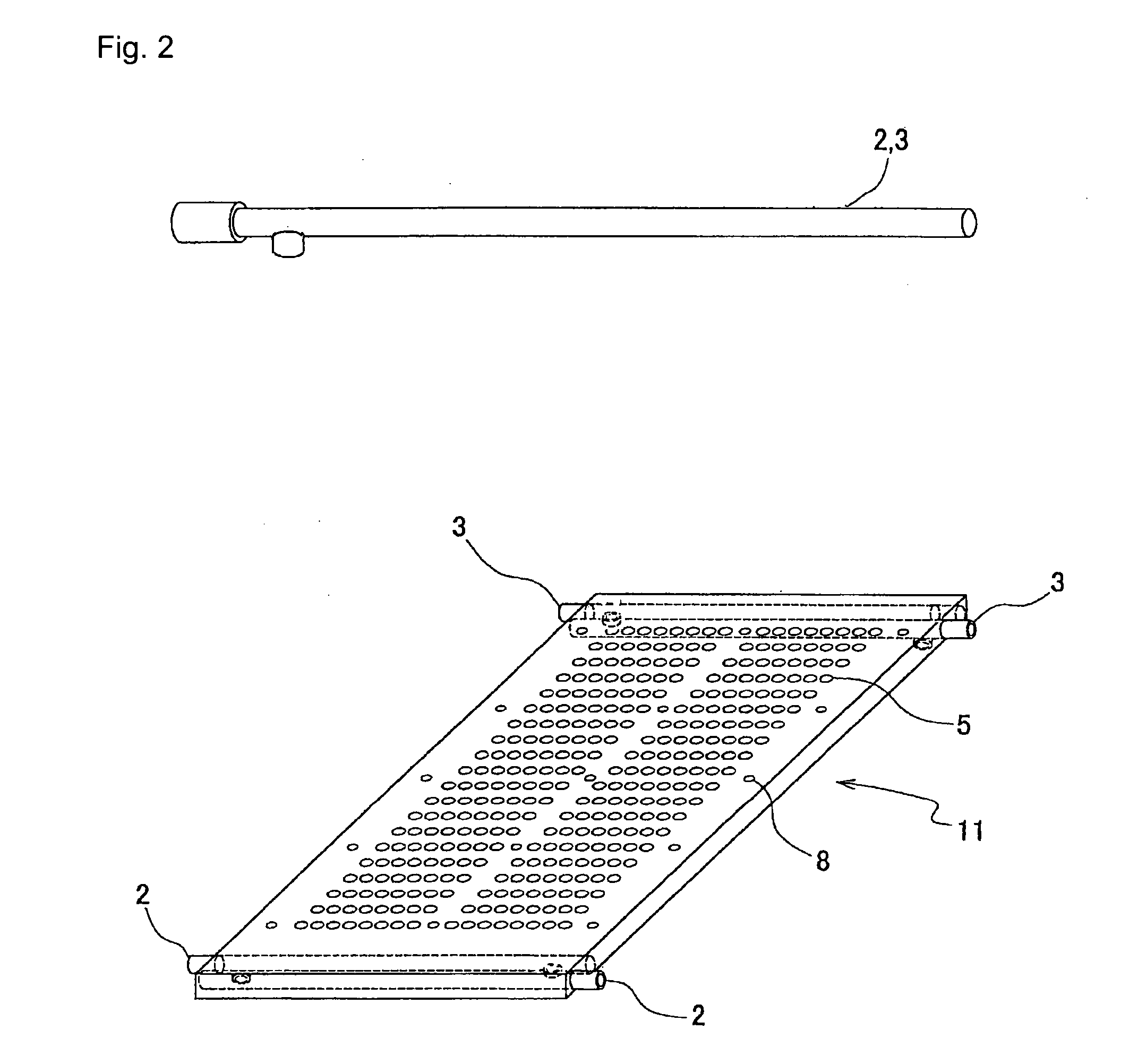Multiwell incubation apparatus and method of analysis using the same
a technology of incubation apparatus and multi-well, which is applied in the direction of lighting and heating apparatus, laboratory glassware, library screening, etc., can solve the problem of complex manipulation and achieve the effect of reducing the size of the apparatus
- Summary
- Abstract
- Description
- Claims
- Application Information
AI Technical Summary
Benefits of technology
Problems solved by technology
Method used
Image
Examples
example 1
[0102]As an incubation apparatus of the present invention, a housing vessel 1 as shown in FIG. 1 was produced. The outer dimensions of the vessel 1, made of aluminum plates, are 347 mm×222 mm×20 mm.
[0103]Each well socket 4 has a diameter of 6 mm and a depth of 13 mm.
[0104]As shown in FIG. 1, a flow channel 2 in the form of a single pipe is provided so as to run along and penetrate through one side of the apparatus. The pipe is made of aluminum and has an inner diameter of 8 mm. The flow channel 2 is connected to a tube extending from a thermostatic bath and also to another tube going back to the thermostatic bath, whereby water of a constant temperature can be circulated. The same situation applies to a flow channel 3.
[0105]With this configuration, the temperature of the incubation apparatus gradually changes from the highest temperature at the vicinity of the flow channel 3 to the lowest temperature at the vicinity of the flow channel 2, thereby attaining a plurality of incubation ...
example 2
[0107]Similar to Example 1, another incubation apparatus was produced, wherein, instead of the section shown in FIG. 12 of the incubation apparatus of Example 1, a section shown in FIG. 13 was employed.
example 3
[0108]Similar to Example 1, yet another incubation apparatus was produced, wherein, instead of the section shown in FIG. 12 of the incubation apparatus of Example 1, a section shown in FIG. 14 was employed.
PUM
| Property | Measurement | Unit |
|---|---|---|
| inner diameter | aaaaa | aaaaa |
| depth | aaaaa | aaaaa |
| inner diameter | aaaaa | aaaaa |
Abstract
Description
Claims
Application Information
 Login to View More
Login to View More - R&D
- Intellectual Property
- Life Sciences
- Materials
- Tech Scout
- Unparalleled Data Quality
- Higher Quality Content
- 60% Fewer Hallucinations
Browse by: Latest US Patents, China's latest patents, Technical Efficacy Thesaurus, Application Domain, Technology Topic, Popular Technical Reports.
© 2025 PatSnap. All rights reserved.Legal|Privacy policy|Modern Slavery Act Transparency Statement|Sitemap|About US| Contact US: help@patsnap.com



